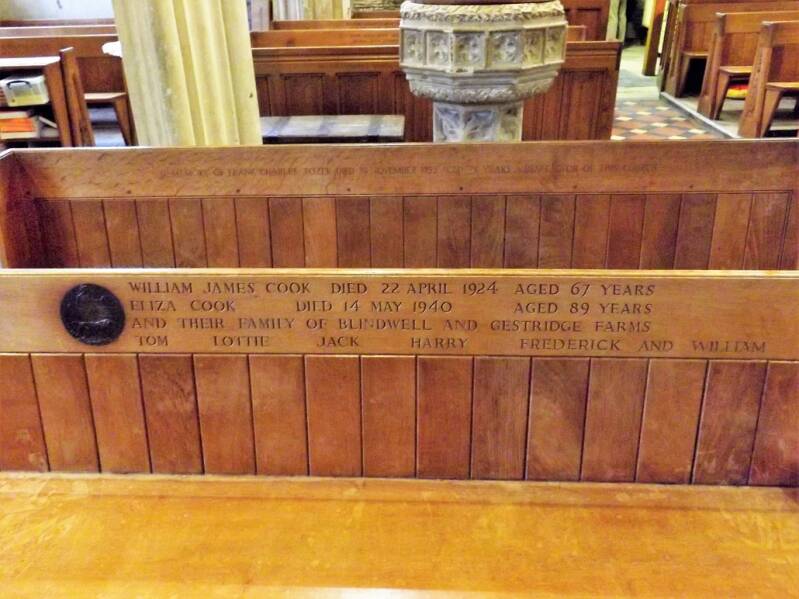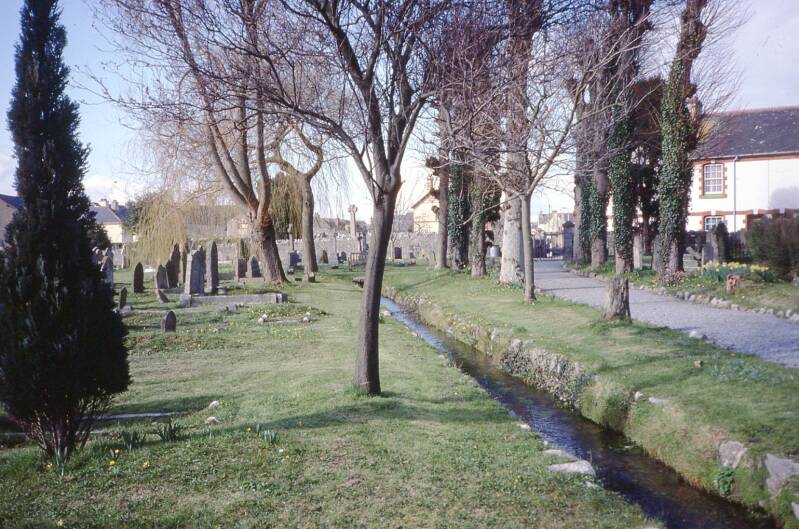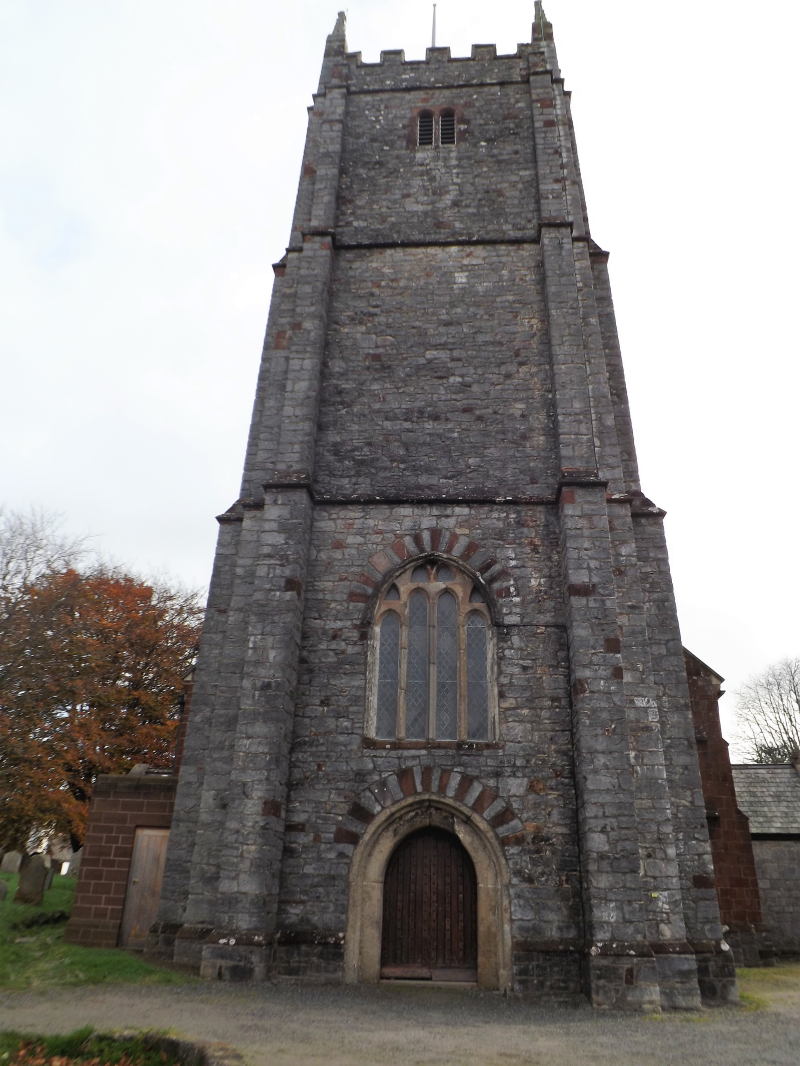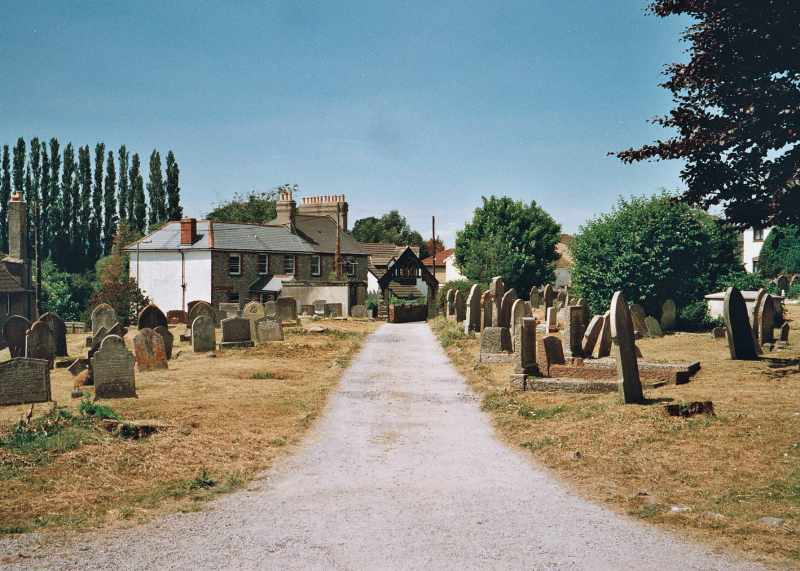THE PARISH CHURCH

Early History
The Anglo-Saxon founders of Kingsteignton had already adopted Christianity when they set up their pioneer estate near the banks of the Teign so there can be no doubt that there has been Christian worship in the village for well over a thousand years. Unfortunately Anglo-Saxon churches were constructed from timber and no part of a church from that period of the village history has survived.
The Church
The parish church is dedicated to St Michael and All Angels.
An interesting entry occurs in St. Osmund’s Register (Salisbury Cathedral), which describes a charter of Bishop Roger. Under this charter Serlo, a revenue collector for Devon, gave the church of Teignton together with the chapels and tithes pertaining to it, to constitute a prebend in the cathedral of Old Sarum, on condition that his adopted son should be the first Prebendary. Included in this gift was the Manor of Preston. The charter dated about 1122 or slightly earlier was confirmed by Pope Eugenius III in 1146. The tithes referred to were the Greater Tithes of hay, corn, wood and wool. Lesser Tithes such as chickens, eggs and peas went to support the vicar.
Another charter dated around 1148 by Baldwin, who styled himself Earl of Exeter and seems to have been in control of the king’s estates in Devon, states that he restored to Salisbury latters rights to the churches of Kingsteignton, West Alvington and Kenton. Later charters in 1224 and 1245 by Popes Honorius II and Innocent IV respectively, confirmed the appropriation of Kingsteignton to the Cathedral Church of Salisbury. In 1841 the Cathedrals Act abolished the Prebend and vested the lands with the Ecclesiastical Commissioners who now receive what was the prebendal income from the clay bearing lands.
The first mention of a vicar in Kingsteignton occurs in 1259. David the Vicar brought an action in the Consistory Court against the Rector and Prebendary Thomas de la Cnolle, because he had not received his tithes of peas and beans. Bishop Bronscombe settled the dispute in favour of David.

The altar, St Michael's
In 1318 the Church was rebuilt and Bishop Stapleton of Exeter made a visit to dedicate the High Altar on 1st May of that year. Of that Church little remains due to subsequent rebuilding, but the South Porch with the lower part of the adjoining aisle probably dates from that period. A feature of the Porch is the decorative carving of vine branches and fruit. On the right side of the porch, enclosed in the vines, are two clasped hands known as "The Bride's Hand". Tradition has it that courting couples became engaged to be married by placing their hands together on "The Bride's Hand" to pledge their troth.
The 15th century was the golden age of church building in Devon. By then the county had recovered from the ravages of the Black Death and the increased population needed accommodating in larger churches. Most of the towers, which are a characteristic of Devon churches, were constructed in this period, reflecting the perpendicular style of the time.
The tower of St. Michael's dates from 1480 and is built of limestone interspersed with red sandstone and developed in three tapering stages. As is typical of Devon towers it is more a construction of strength than one of beauty. Nevertheless it is an impressive example of masoncraft of the Middle Ages and a fine example of the perpendicular gothic architecture in found in Devon. It measures 82ft. in height and the walls are 6ft. thick. The four pinnacles differ in stone from the rest of the tower and may have come from some earlier church.
The Church itself is a fully developed church of the 15th century possessing a Chancel, Nave, North and South Aisles, South Porch and West Tower.
Memorial Tablets
Contained in the Church are numerous memorials dating from the 17th century onwards, many commemorating the families who formerly owned great portions of the parish.
On the floor of the South Aisle is the Clifford Memorial dedicated to James Clifford of Ware, the last of the Kingsteignton branch of the family.
Mounted on the South Wall is a tablet to Rebecca Hele of Babcombe, wife of Bishop Trelawney of Exeter. Trelawney was one of seven Bishops sent to the Tower in 1688 an event recalled in the famous “Song of the West Countrymen” by R.S.Hawker which has become the “national anthem” of Cornwall. One of the sons of Rebecca Hele and Sir Jonathan Trelawney was one Col Edward Trelawney who became Governor of Jamaica in 1738. Descendants of Rebekah married into the Buller family and the Russell family who were Dukes of Bedford, but perhaps her most famous descendant is Prince William, Duke of Cambridge.
In the side chapel is a memorial to 38 men from the parish who gave their lives in WW2. The figures shown depict St George and St Christopher together with the coats of arms of St Micahel and St Peter.

Roodscreen
Separating the Chancel and Nave are the remains of a Rood Screen, the lower panels of which can still be seen, depicting figures of Saints. Of the fourteen figures originally shown, the first three have been almost obliterated. Remaining are: St. Denys, St. Barbara, the Bishop, St. Katherine, St. Helena, St. James, St. Margaret, The Abbot, St. Ursula, St. William and St. Genevieve.
The major part of the screen was taken down in 1801, when it was described as "ruinous and decayed" in a petition to faculty dated 3rd September 1801. A portion was taken to the new vicarage (now known as The Chantry) which was built between 1815 and 1821 for the Rev Thomas Whipham, where it forms a partition wall between the hall and the drawing room.
The staircase to the rood loft was blocked up but rediscovered in 1934.

Perhaps the most fascinating memorial is the one (shown left) located near the Priest's Door in the Chancel. Dedicated to a former Vicar named Richard Adlam it reads:
"Ricardius Adlam HuiusEcclesiae Vicarius obuit Feb 10 1670Apostrophe ad Mortem
Damn'd Tyrant can't prophaner blood suffice.
Must Priests that offer be the sacrifice.
Go tell the Genii that in Hades lie,
Thy Triumphs o're this sacred calvary
Till some just Nemesis avenge our cause
And force this Kill-priest to revere good lawes."
Over the Vestry Door is a memorial to Christopher Beeke who was Vicar for 61 years. His son, Henry Beeke, was born in Kingsteignton in 1751 and became Dean of Bristol. As the land agent for the Palk family's Torwood Estate Henry was largely responsible for the layout of Torquay when it developed into a fashionable resort town in the early 19th century. He was also one of the great proponents for the introduction of income tax and acted as an advisor to the government when it was introduced.
On the north wall of the Church is the Watts Memorial. This family has long associations with the village and the Church. Several generations are interred in the family vault beneath the floor. It was a member of this family, the Reverend Nicholas Watts, who was the co-founder of Whiteway, Watts & Co in 1796, the first local clay company. John Whidborne, a banker and solicitor, whose principal residence was at Gorway, Teignmouth, married into the Watts family and is interred in the Watts vault which is situated near the north wall of the church. He was a great benefactor to the church and purchased a plot of land to be used as a playground for the Church School (now St Michael's).
The East Window is in memory of the Rev. John Hawkins Hext, Vicar of the Parish between 1858 to 1878. The design is based on St. John's vision of Christ as recorded in the Book of Revelations.
As with many of the fittings the choir stalls are dedicated to the memory of someone connected to the church , in this case to Basil Jackson, the son of the Rev. Prebendary and Mrs. Jackson who died in Queensland in 1899 and were made by Herbert Read of Exeter.
Along the Nave, which measures some 80ft. 6in. in length from the Belfry to the East Window, are five arches opening into the North and South Aisles. The pillars lean outwards and originate from the same period as the Devil's Door. The capitals of the pillars are richly ornamented, as is the 15th century octagonal font . The Choir Vestry Screen was dedicated in 1949 in memory of Richard Cornall and his wife.

The Pews
In 1951 the process of replacing the old pine benches with modern oak pews began. The pews were designed by local architect Mr Arthur Newcombe and most of the pews contains a carved end panel depicting the a scene from life of the person to whom it is dedicated. A Viking ship is shown on the panel of the pew dedicated to William Tregale who discovered what was thought to be a Viking ship at Zitherixon in 1896. A brace of partridges, a shotgun and a milk churn reflect the life of former village dairyman Gorwyn ("Gorgie") Samuel Partridge, whilst cattle grazing beside the river Teign remember the life of Wilfred Mann Stark who farmed at Preston.

The end of the Cook family pew shows two horses looking out of a stable door which reflects the family's involvement in farming and hauling clay. William Cook's father (another William) started the ball rolling when he moved to Kingsteignton from Sticklepath in the mid nineteenth century and worked Gestridge Farm.
The bronze plaque inset into the back of the pew is the "Death Plaque" sent to the family in respect of the loss of Harry Cook who died in 1915 from injuries sustained at the Battle of Loos.
The plaque features Britannia, a dolphin and a Lion and is often referred to as a " Dead Man's Penny".
Restoration
In 1865 the Church was thoroughly renovated. The old high box pews were substituted for benches and a west gallery above the Nave removed. An entirely new roof was placed over the Nave and Chancel, and the roofs over the aisle strengthened. Seven windows were restored and the marble pulpit and the reredos, carved with representations of the four Apostles, were erected. The Church interior was given a whole new aspect, which contrasted with its former dingy appearance. The total cost of the work amounted to £1,650 of which £435 was donated by the Watts family.
As part of the 1865 restoration the north aisle was extended to accommodate the church organ.
The Bells
Contained in the Tower is a peal of eight bells. White's Devon Directory of 1850 records that the church then had a peal of five bells. A treble bell was donated by Mr John Whidborne in 1869. Unfortunately, a crack in the tenor bell meant that for several years the bells went unrung but it was recast and rehung by bellfounders Messrs Aggett of Chagford in 1919. Two new bells were added in 1929, the gifts of George and Alethea Beer and Samuel and William Couch. At the same time the original six were re-cast at the foundry of Messrs Gillett and Johnson, Croydon. A new frame was fitted in the belfry to accommodate the new bells and the peal was rehung. In 1994 the belfry was completely refurbished.


The chuch bells can be heard by clicking on the link below:-
https://www.youtube.com/watch?v=qLUkIVyAeOw

The Church Choir
The photo to the left was kindly loaned by Jonathan (Joff) Bibbings.
Like many parish churches Kingsteignton has a church choir. The lineup in this picture dating from around 1960 reads as follows:-
Back Row:- Ken Stedman, Ian McGregor, Malcolm McGregor, Paul Vallance, Timothy Willcocks, Mr Kerr.
Middle Row: Dave Bray, Martin Moss, John Shapter, Phil Isaacs, Jonathan Bibbings, Pete Blood, Courtenay Packer, Phil Tozer, Pete Heale, Dave Brooks, Chris Bray.
Front Row: Kevin Cox, Ryan Hooper, James Davis (organist), Stanley Hodge (vicar), Bill Vallance, Roger Bibbings, Roger Kelly.Joff recalls that the choir boys were paid 7s 6d (37.5p) per quarter with an additional 2s 6d (12.5p) per wedding. If they had two weddings of a weekend they felt rich as a bar of Cardbury’s Dairy Milk only cost 6d (2.5p).

The Lychgate
On 20th December 1889 the Bishop of Exeter visited the church to preach and dedicate the new lychgate.
The new gate was commissioned by Mr Thomas Butland and is unusual as it possesses an arch filled with tracery more usually found in a roodscreen.

The Churchyard
The Churchyard has been used as a burial ground for centuries but now is closed to any further interments due to overcrowding. The lack of space for any more graves led the Rev. Peter Symons to apply to the Department of the Environment in December 1976 for its closure.
A granite boulder forms the headstone of the grave of William Derges. He died after a fall whilst riding on Dartmoor.
Almshouses used to stand to the lower side of the Lych Gate and other cottages stood on the higher side until their demolition in 1920.
Running through the Churchyard is the Fairwater Leat from
Rydon. It passes through the Churchyard to Lower Mill and thence on into the Teign.


Left : the Church Path Right: the fifteenth century tower

Church Path looking towards Lychgate from Tower.

Church from south-east


